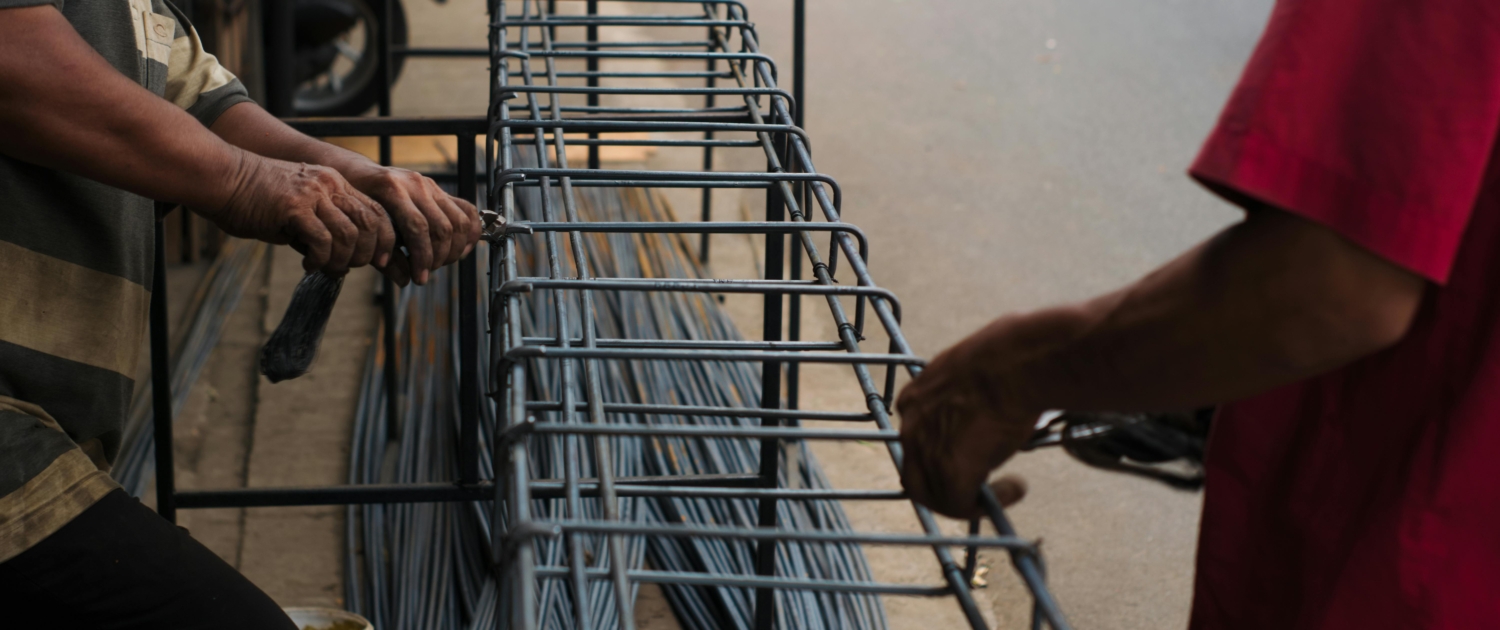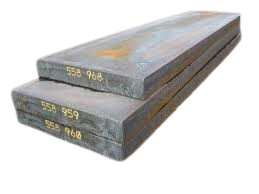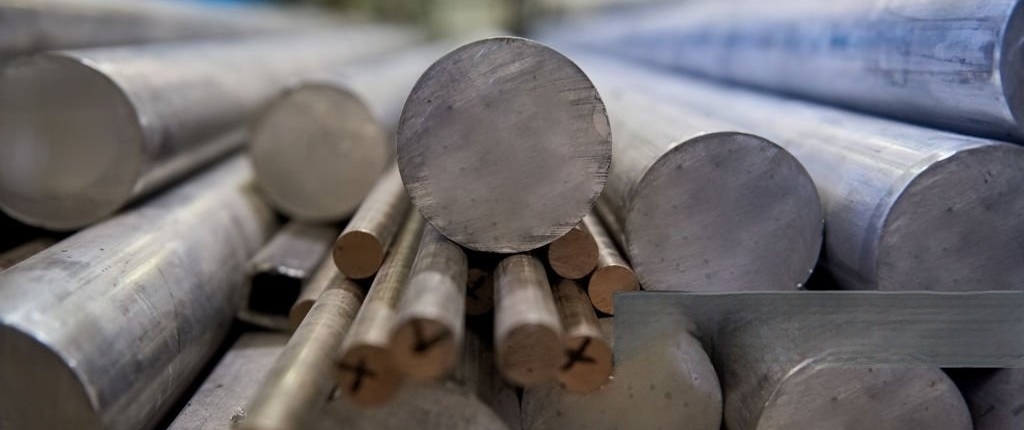What Are Ribbed Steel Bars?
Ribbed steel bars are long steel rods with distinct ridges or deformations along their length. These ribs enhance the bond between the steel and concrete, ensuring greater load transfer and structural stability. Ribbed steel bars are preferred over plain bars in applications with paramount tensile strength and durability.
Types of Ribbed Steel Bars
Ribbed steel bars can be categorized based on their composition, applications, and manufacturing processes:
- Thermo-Mechanically Treated (TMT) Bars
- Manufactured using heat treatment processes.
- High ductility and strength.
- Corrosion-resistant, making them suitable for coastal and marine applications.
- Cold Twisted Deformed (CTD) Bars
- Made by twisting plain hot-rolled bars after cooling.
- It is good for applications requiring moderate strength.
- Gradually being replaced by TMT bars due to better performance characteristics.
- High-Strength Deformed (HSD) Bars
- Known for their exceptional tensile strength.
- Widely used in large-scale infrastructure projects like bridges, dams, and high-rise buildings.
- Epoxy-Coated or Galvanized Bars
- Coated to resist corrosion and chemical attacks.
- Ideal for structures exposed to harsh environments, such as wastewater treatment plants or industrial facilities.
Tread Patterns and Their Importance
The design and alignment of the ribs significantly influence the bonding performance of ribbed steel bars.
- Crossed Ribs
- Crisscrossing ribs provide optimal grip in concrete.
- Widely used in TMT and HSD bars.
- Spiral Ribs
- Helical patterns enhance anchorage in dynamic load applications.
- Commonly found in seismic reinforcement bars.
- Longitudinal Ribs
- Parallel to the bar axis.
- Improve handling and placement during construction.
The combination of rib design and placement ensures effective stress distribution in concrete structures.
Production Methods
The production of ribbed steel bars involves several advanced metallurgical processes:
- Primary Steelmaking
- Basic Oxygen Furnace (BOF): Steel is made by reducing molten iron ore with oxygen.
- Electric Arc Furnace (EAF): Steel scrap is melted using electric arcs.
- Hot Rolling
- The steel is heated to high temperatures and passed through rolling mills to achieve the desired diameter.
- Ribbing
- During the rolling process, ribs are impressed onto the surface using specially designed grooves in the rollers.
- Thermo-Mechanical Treatment (TMT)
- Bars are subjected to controlled quenching and tempering, resulting in a tough outer layer and a softer, ductile core.
- Finishing and Quality Control
- Bars are cut to standard lengths, inspected for defects, and tested for compliance with quality standards.
Standards for Ribbed Steel Bars
Compliance with industry standards ensures that ribbed steel bars meet the required performance and safety criteria. Some widely recognized standards include:
- ASTM International (American Society for Testing and Materials)
- ASTM A615: Covers carbon steel bars for general construction purposes.
- ASTM A706: Focuses on low-alloy steel bars for seismic applications.
- BS (British Standards)
- BS 4449: Specifies requirements for ribbed steel bars in reinforced concrete.
- EN (European Standards)
- EN 10080: Harmonized standard for reinforcing steel in Europe.
- ISO (International Organization for Standardization)
- ISO 6935-2: International specifications for ribbed bars.
- Other National Standards
- IS 1786 (India): High-strength deformed steel bars for concrete reinforcement.
- JIS G3112 (Japan): Steel bars for reinforced concrete.
Sizes of Ribbed Steel Bars
Ribbed steel bars are manufactured in a wide range of diameters and lengths to suit various construction requirements:
- Diameters
- Standard sizes range from 6 mm to 50 mm.
- Smaller diameters (6 mm to 12 mm) are used for lightweight and secondary reinforcement.
- Larger diameters (16 mm to 50 mm) are suitable for heavy-duty applications like bridges and industrial foundations.
- Lengths
- Typically available in standard lengths of 12 meters, though custom lengths can be ordered.
- Weight and Unit Conversion
- The weight of ribbed bars is calculated using the formula: Weight (kg/m)=d2162\text{Weight (kg/m)} = \frac{d^2}{162} where dd is the diameter in millimeters.
Applications of Ribbed Steel Bars
Ribbed steel bars are a fundamental component in:
- Residential and Commercial Buildings
- Reinforcement for slabs, beams, and columns.
- Infrastructure Projects
- Highways, flyovers, and bridges.
- Marine and Coastal Structures
- Docks, piers, and seawalls.
- Dams and Water Reservoirs
- Provide structural integrity in large-scale hydro projects.
Advantages of Ribbed Steel Bars
- Enhanced Bond Strength
- Ribs ensure better adhesion with concrete, reducing slippage.
- High Tensile Strength
- Capable of withstanding heavy loads and stresses.
- Corrosion Resistance
- TMT and epoxy-coated bars provide extended durability in corrosive environments.
- Cost-Effectiveness
- Available in various sizes and finishes, catering to diverse budget constraints.
- Sustainability
- Modern production processes emphasize energy efficiency and recycling.









